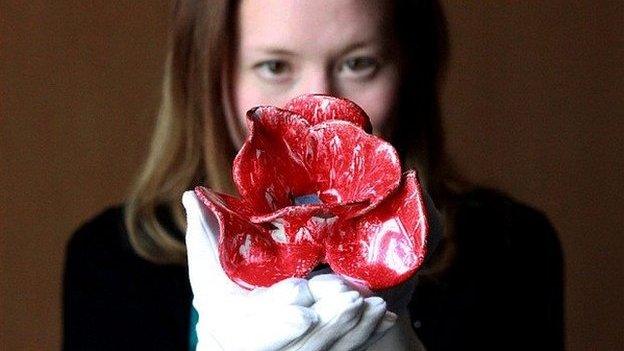WW1 commemorations: Royals 'plant' ceramic poppies at Tower of London
- Published
Royals 'plant' Tower poppies
The Duke and Duchess of Cambridge and Prince Harry have "planted" a ceramic poppy at the Tower of London marking the centenary of World War One.
The Blood Swept Lands And Seas of Red, external exhibition, by artist Paul Cummins, involves 888,246 ceramic poppies planted in the dry moat at the Tower.
A poppy has been made for each British and Colonial death during the conflict.
The first ceramic poppy was planted last month, with the final one due to be installed on Armistice Day.
During the visit, Prince William was heard telling the artwork's creator the piece was "spectacular".
Mr Cummins said he was inspired by a line from the will of a Derbyshire serviceman who died in Flanders.
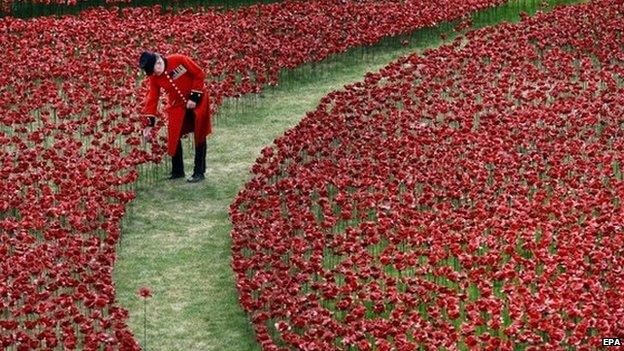
Each poppy planted in the Tower of London's moat represents a WW1 military fatality
In the will the soldier describes "the blood swept lands and seas of red, where angels fear to tread".
Britain declared war on Germany at 23:00 on 4 August 1914, with thousands of soldiers engaged in the bloodiest conflict the world had known until the armistice was signed on 11 November 1918.
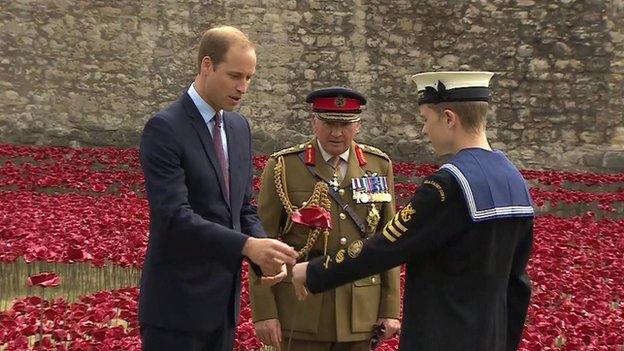
Prince William 'planted' his ceramic poppy with help from General Lord Dannatt
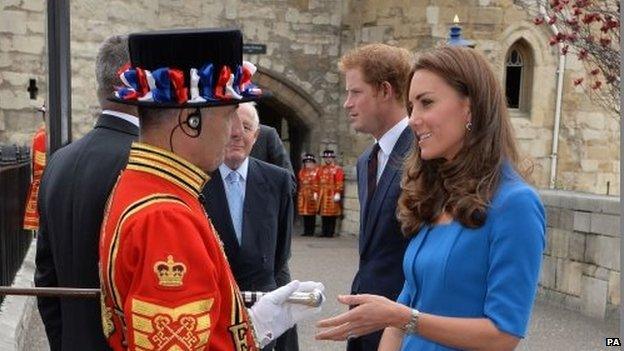
The Duchess of Cambridge spent time talking to the Yeomen during her visit to the Tower of London
The Tower of London was where more than 1,600 men swore an oath to the crown after enlisting for war.
It was also used as a military depot, ceremonial setting-off point for regiments who had been stationed there and the execution location for 11 German spies.
The poppies are currently being sold for £25 each, which it is hoped will raise an estimated £15m for six armed forces charities.
General Lord Dannatt, former head of the Armed Forces and Constable of the Tower of London, said: "This is incredible and it's really moving.
"This installation, when it's complete... brings it home individually. It was a life lost, a family ruined, a community shattered. And I think it's absolutely right that in the mass, you pick out the individuals."
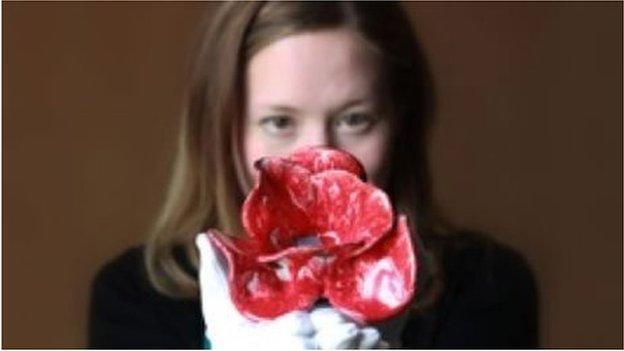
The poppies were inspired by a line from the will of a serviceman killed in Flanders
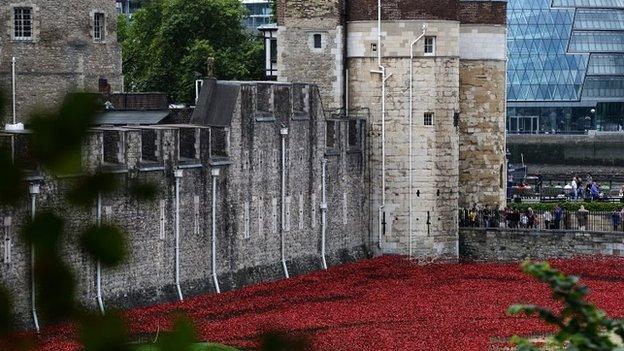
Each poppy will be sold to raise funds for several armed forces charities
Lord Dannatt said he hoped the poppies would go "right across the land, right across the world" after their sale.
He said: "The money raised will be important because it can go to help the wounded, injured and sick of our current generation, so I think the previous generation will be very pleased that their sacrifice has produce this.
"It's a wonderful coming together over the 100 years."
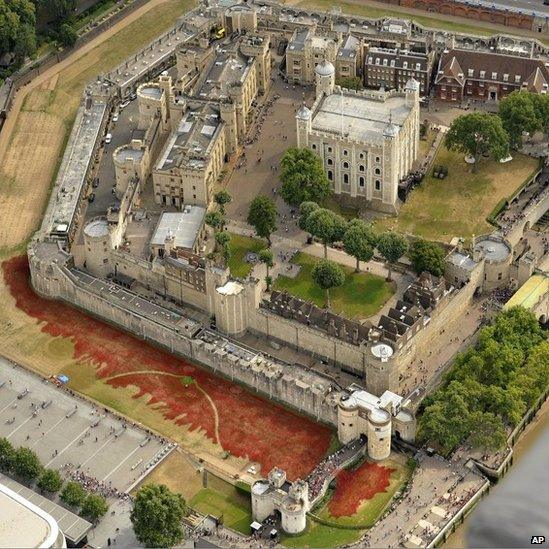
The poppies spill out into the dry moat at the Tower of London
Chief Yeoman Alan Kingshott, who is overseeing the planting of the poppies, said about 140,000 had so far been planted, although some had been broken during the process because they were so delicate.
He said: "It's so devastating when you break it because it's representing a life.
"They have to be treated with care and it's a long process to actually plant them and so it's not a thing you can do lightly."

Just under 750,000 poppies still need to be planted by 11 November, Chief Yeoman Alan Kingshott said
The visit to the Tower by members of the Royal Family comes a day after they joined political leaders and relatives of the fallen to remember the sacrifices and losses exactly a century on from Britain's entry into the war.
A "lights out" event on Monday saw people across the country invited to turn off their lights for an hour until 23:00, the time war was declared in 1914.
The team at Paul Cummins Ceramics make the clay poppies which are then sent to be painted
- Published5 August 2014
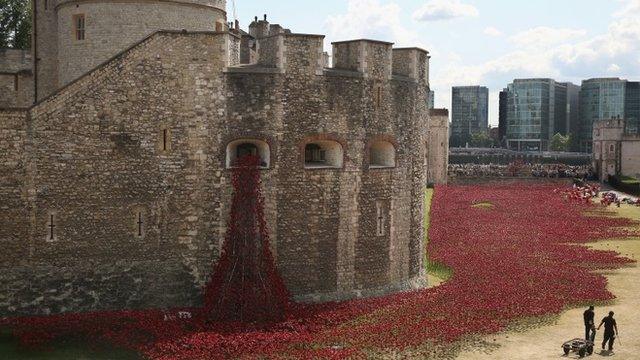
- Published5 August 2014
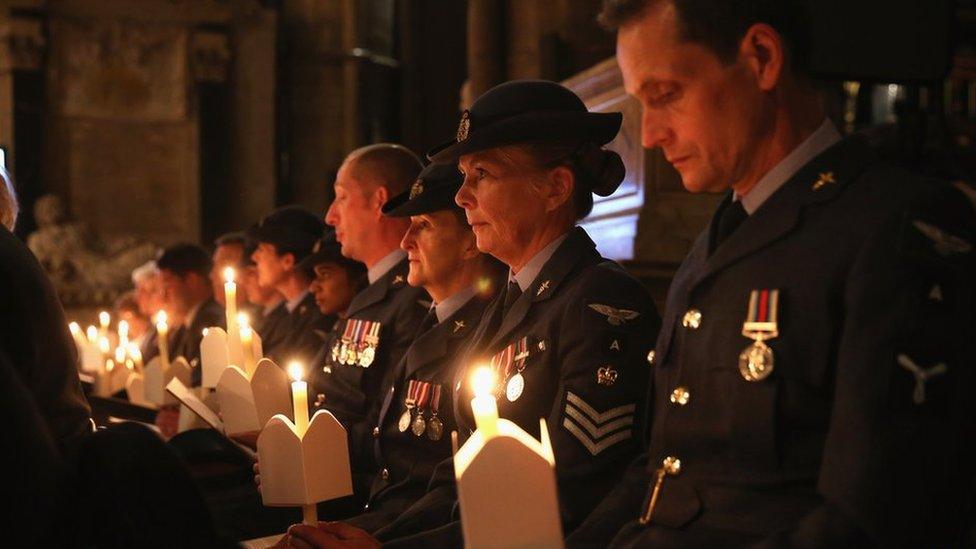
- Published5 August 2014
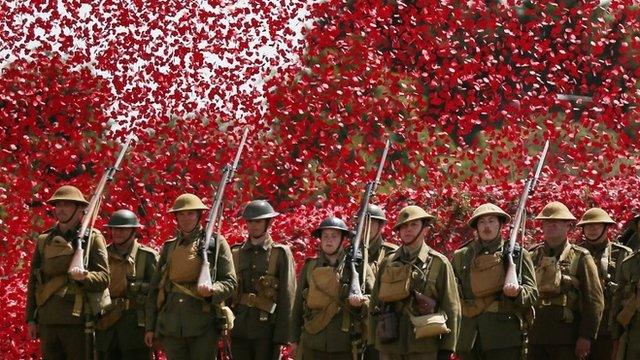
- Published4 August 2014
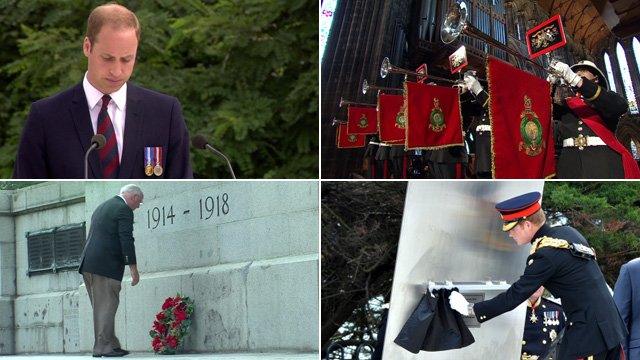
- Published17 July 2014
